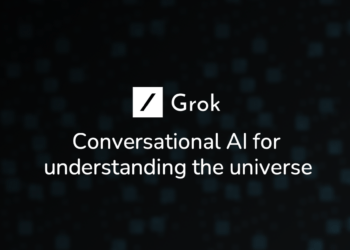Machine learning (ML) has become a core discipline within the field of artificial intelligence, providing mathematical models and algorithms capable of learning patterns and making decisions with little or no human intervention. Model selection and cross-validation are two fundamental aspects in designing efficient, accurate, and robust machine learning systems. These techniques allow data scientists and developers to evaluate the performance of different models and avoid overfitting or underfitting, leading to the choice of the best model based on empirical and theoretical evidence.
Cross-Validation: Rigorous Evaluation of Model Performance
Cross-validation is a model evaluation and quality assurance method used to assess how the results of an ML model will generalize to an independent dataset. There are several cross-validation techniques, but the common denominator is splitting data into subsets to provide multiple evaluations of model performance.
K-Fold Cross-Validation
A common technique is “k-fold” cross-validation. In this approach, the dataset is randomly divided into “k” subsets of equal size. Each one of these “folds” is used once as a testing set, while the remaining “k-1” make up the training set. This process is repeated “k” times, with each “fold” used exactly once for result validation. The model’s accuracy is then estimated by taking the average of the evaluated metric values, such as accuracy, across all “k” cycles.
Leave-One-Out Cross-Validation (LOOCV)
Another approach is “leave-one-out” cross-validation (LOOCV), which is a special case of k-fold where “k” equals the number of samples. In each iteration, a single sample is used as the testing set, and the remainder as the training set. This is particularly useful for small datasets but can be computationally very costly for larger sets.
Model Selection: Finding the Best Hypothesis
Model selection is the process of choosing a model from a set of potential candidates that maximizes effectiveness in a given task. Ideally, selection should be guided by clear and objective criteria, including model complexity, performance on cross-validation, and the interpretability of the results.
Information Criteria
Information criteria, such as Akaike’s Information Criterion (AIC) and the Bayesian Information Criterion (BIC), provide a quantitative measure of a model’s quality. Both criteria penalize model complexity in an effort to prevent overfitting, offering a good tool for comparing the performance of models with different numbers of parameters.
Sensitivity Analysis
Sensitivity analysis investigates how variation in the output of a model can be attributed to different sources of variation in the inputs. This approach helps to understand the robustness of the model and the influence of each variable on predictions.
Practical Applications: Case Studies
Medical Diagnosis
In medical diagnosis, model selection and cross-validation are vital for the development of reliable predictive systems. For instance, to predict cancer recurrence, different models such as decision trees, neural networks, and support vector machines may be trained with clinical and genetic data. Using cross-validation, it is possible to evaluate which of these models has the greatest accuracy and, consequently, the potential to be used by physicians in clinical decision-making.
Quantitative Finance
In the financial sector, predictive models are constructed to assess credit risks, stock prices, or market movements. Careful model selection through cross-validation can be the difference between a profitable and a disastrous strategy. A linear regression model may be useful for predicting short-term stock prices, while deep learning algorithms may be more suitable for detecting complex patterns over the long term.
Conclusions and Projections
The practice of cross-validation and model selection in ML is a cornerstone in the process of developing robust and precise predictive models. The growing availability of data and advances in computing power allow researchers and practitioners to scrutinize their models increasingly and with more sophisticated methods. However, challenges such as understanding the outcomes of deep learning models, data privacy during cross-validation, and balancing model accuracy against computational load remain active areas of research.
In the future, we can expect innovations both in cross-validation methodology, possibly incorporating semi-supervised or unsupervised learning techniques, and in model selection, which may focus on maximizing interpretability and fairness in addition to performance. As the field of ML evolves, these practices will continue to be crucial for discovering new applications and improving existing ones, thereby driving the continuous development of artificial intelligence.






















